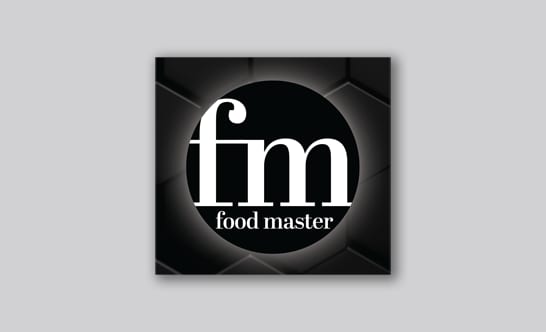Food Safety - Part 1
Getting Pressure to Remove the Heat?
High-pressure processing—or cold pasteurization—can be a significant investment, but if your product is perceived as organic, high-end, minimally processed and nutritional, it may well be worth the investment.
High pressure processing—or high-pressure pasteurization (HPP)—as we know it got its start back in the 1940s when ASEA (which later become ABB) hired Baltzar von Platen to head a secret project, code-named “Quintus,” to produce synthetic diamonds using a process he invented, which combines heat and extremely high pressure. Quintus Technologies started making industrial equipment for the aerospace and medical industries, and began to research potential applications in the food and beverage industry.
According to Ed Williams of Quintus Technologies, early Quintus HPP research equipment included the QFP 6 to small commercial/pilot plant systems with the 35-L. In the late 1990s, Quintus offered under the Avure name the first true commercial food system with its vertical 215-L system, which is still in operation at several companies such as Hormel Foods, Wholly Guacamole, Perdue Farms and others. Currently, Quintus Technologies offers 150-L and 400-L machines.
“In May 1999, Flow International Corporation purchased the high-pressure division of ABB in Sweden, which manufactured HPP vertical systems (35-L and 215-L) for batch processing of packaged products,” says Dr. Errol Raghubeer, JBTAvure senior VP of HPP science & technology. Since then, most of the current JBTAvure HPP equipment used in the food and beverage industry are horizontal systems with capacities of 100, 350 and 525 liters. The original vertical system, modified to 350 liters, is still being produced and used in the seafood industry for the shucking of shellfish and crustaceans.
A pair of Quintus Technologies high-pressure processing (HPP) QIF 400L-6100 systems will begin operation in Yiqing Food’s new beverage facility in Danjiangkou, Hubei province, China by year’s end. The machines feature VFD motor drives, SmartPress cloud-based management software, fewer moving parts and easy access to all components requiring regular maintenance or inspection. Image courtesy of Quintus Technologies
by Wayne Labs, Senior Contributing Technical Editor

If you get a fresh guacamole, you know it doesn’t keep for very long at home in the fridge once you’ve pealed it and used it by itself or in a salad. Good Foods has solved that problem and used HPP to give its product a long shelf life. Applegate’s oven roasted turkey with a resealable container was run through the HPP step in its packaging, designed to work with HPP systems. Image courtesy of Applegate
Hiperbaric of Spain, which has its roots in high-pressure equipment, has since 1999 installed more than 400 HPP units in food and beverage companies on five continents. “The concept of using high pressure for food preservation has been around since the 19th century, but the technology did not advance significantly until the 1990s,” says Anthony Zapata, Hiperbaric business development manager. “Hiperbaric was founded in 1999 and developed some of the first commercially viable HPP machines.”
“In 2002, Hiperbaric was the pioneer in bringing to market the horizontal high-pressure processing equipment Hiperbaric 300 (300 l – 5000 bar/500 MPa/72500 psi) in the Campofrío meat products plant in Burgos, Spain,” adds Zapata.
HPP Preferred Applications
“HPP is a non-thermal sterilization technique,” says Tony Moses, director of product innovation at CRB, a CSIA Member. “It works best in applications where high temperatures either negatively impact the quality of the product, such as avocado dips and raw pet food, or the functional properties of the product, such as probiotic drinks and juices. HPP alone is typically not sufficient to create a shelf-stable product, so it needs to be combined with either keeping the product chilled, which is done for avocado dip or juices, or drying the product, which is done for raw pet food.”
HPP is a non-thermal food processing method that inactivates spoilage microorganisms and foodborne pathogens by using cold water and extremely high pressure, says Qunitus’s Williams. HPP allows food producers to promote food safety while increasing shelf life and maintaining the original, desirable food qualities. HPP is currently applied to several food categories including juice-based beverages, RTE meats, ready meals, baby food, pet foods, seafood and other products where food safety goals are met without the use of chemical preservatives and destruction of natural nutrients. This not only offers food producers a technology to ensure food safety and extension of quality and shelf-life, but also satisfies consumers’ demand for healthier, fresher-tasting foods that are clean label, minimally processed, without chemical preservatives and with reduced sodium content.

HPP of common refrigerated foods shows a dramatic extension of shelf life, which means potentially less waste as product can be on the shelf or in the home refrigerator for a longer period of time before spoiling. Image courtesy of JBTAvure
“The limiting factor for foods and beverages for HPP application is water activity,” says JBTAvure’s Raghubeer. “Free water is important in the disruption of microbial biochemical reactions and for conformational changes [in] cell membranes. In addition to intrinsic factors such as pH and water activity levels, extrinsic parameters such as temperature of storage and presence of oxygen are limiting factors for certain foods. Current HPP food and beverage application is a pasteurization process requiring refrigeration of most, if not all, HPP treated products. The exclusion of oxygen is of importance for both microbial shelf-life stability and control of oxidative degradation of HPP products.”
Hiperbaric’s Zapata lists some key applications for HPP:
• Cold-pressed juices and beverages—HPP maintains freshness and inactivates pathogens without using traditional thermal pasteurization.
• Guacamole and avocado products—HPP prevents browning and loss of quality.
• Dressings, sauces and wet salads—HPP maintains flavor, texture and color better than heat.
Compared to other non-thermal technologies, HPP provides higher microbial inactivation levels while maintaining freshness and sensory quality. It also allows processing pre-packaged foods, preventing recontamination.
Recent HPP applications include:
• Raw pet food and nutraceuticals—HPP enhances food safety by achieving a 5-log reduction of vegetative bacteria, yeasts, molds and virus, while preserving the raw and natural profile of raw pet food and nutraceuticals.
• Ready-to-eat foods—HPP offers food safety and maintains freshness by extending shelf-life without adding preservatives.
• Baby food—HPP reduces microbial risks while preserving nutrients.
The use of HPP technology can lead to substantial water and energy savings, when compared to other food processing technologies, having a lesser impact on the environment, adds Zapata. It has been shown that HPP requires less energy per kilogram of food than conventional thermal processes.
“In fact, a study from 2020 compared the impact of processing orange juice with HPP and thermal pasteurization,” says Zapata. “The authors concluded that HPP is on average less environmentally impactful than thermal pasteurization, resulting in fewer carbon emissions. Furthermore, since the water used in HPP does not come in direct contact with the food products, around 85% of the water is reused. It is noteworthy that the remaining 15% of water is not necessarily wasted, as it may be collected for other uses, such as cleaning purposes.”

HPP equipment is becoming easier to repair, thanks to easily accessible parts and intelligent maintenance management systems. Image courtesy of Quintus Technologies
Building Requirements
Like retorts, an HPP installation will make some demands on facility infrastructure. One thing to keep in the back of your mind—should your facility not be able to accommodate an HPP system—there may be a nearby third-party toller that can process your products. Pricing is typically based on a per-cycle or per-pound of product.
Zapata points out some basic facility needs that you should consider before installing in an existing or a new facility:
• HPP systems are large and very heavy (up to 235,000 pounds), so a proper foundation is needed. Adequate space is required for loading/unloading of product around the HPP machine.
• A chiller is required for cooling hydraulic oil and processing water.
• Compressed air is required to manipulate certain components.
• Each model requires electrical infrastructure.
• Internet is needed to enable Hiperbaric’s 24/7 complimentary remote assistant support, which features real-time monitoring and reporting of HPP cycles.
“Although HPP has a higher capital cost than thermal pasteurization, it uses less energy than thermal processes,” says Zapata. “Overall, the benefits of quality, safety and shelf life make HPP a strategic investment for many food/beverage companies despite the higher upfront costs. Thorough cost-benefit analysis is recommended.” End of Part 1


